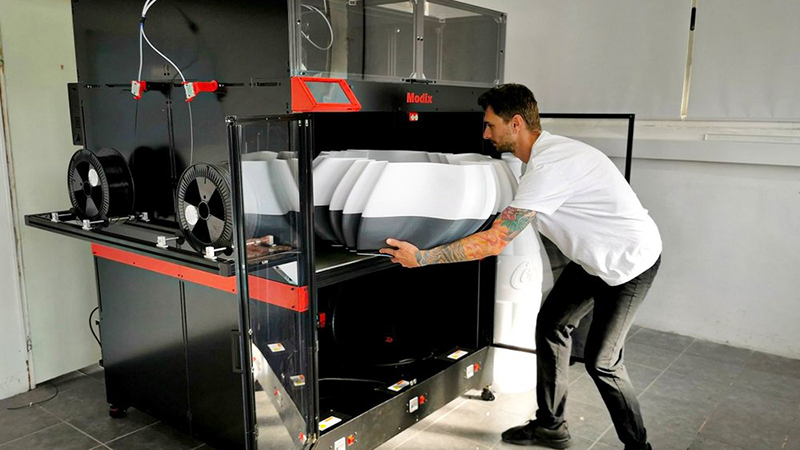Additive manufacturing (AM), also known as professional or industrial 3D printing, is a relatively new industry in the larger manufacturing industry. Nevertheless, it has quickly reached commercial viability and is the most widely used of all manufacturing methods.
Up to now, additive manufacturing is an industry worth more than 7 billion dollars, which has been found in the production facilities of aerospace and automotive giants, military and hospitals, architectural and industrial design companies, workshops of small manufacturers, and laboratories of research institutions Home. And university.
No matter what industry you are in, compared to molding, milling, and joining, additive manufacturing is the manufacturing of products, parts, tools, and prototypes that are more efficient, lighter, more economical, more customized, and faster to produce. Good selection, engraving and molding, suitable for almost every industry.
Additive manufacturing also enables you to recycle manufactured products and parts from distant factories, overcome supply chain disruptions, eliminate inventory stocks that may never be used, and print on demand what you need now.
Let’s take a look at what additive manufacturing is, why governments and industries invest millions of dollars in it, and how it can help your business innovate and prosper.
Additive Manufacturing Pros and Cons
Additive manufacturing is adding materials layer by layer until the desired shape is obtained, thereby effectively creating parts from nothing. It uses various techniques to do this. Some additive manufacturing methods extrude plastic from nozzles, some use light to cure liquid plastic in barrels, some use lasers to connect powder material particles into solid shapes, and there are many more methods. But what they have in common is that they “add” material layer by layer, rather than “subtract” material from a larger block.
Although the terms additive manufacturing and 3D printing are often used interchangeably, this is not entirely true. 3D printing is the main process step of additive manufacturing, but additive manufacturing covers more scope, from the initial part design to polishing and other processing steps. In other words, it covers all the processes required to make objects, not just 3D printing.
All AM technologies have the following advantages:
Make shapes that are difficult to make
Additive manufacturing can produce complex parts such as complex internal channels, grid-filled enclosed spaces, and strong interlocks.
Process environmental protection
Any excess material can be reused to make the next part. 3D printers can use post-consumer plastics as materials to make new products, and can use fewer raw materials to make products.
Eliminate part assembly
Through additive manufacturing, components can be printed in a single build, thereby eliminating time and labor, reducing errors in the assembly process, and can be 3D printed in one piece without fragile seams.
Economical unique customized products
Each product or part of additive manufacturing can be unique. It provides advantages for companies that rely on providing tailor-made products (such as customized sports equipment).
Low barriers to entry
Professional 3D printers start at about $10,000 and are largely automated, which allows a large number of companies that once relied on outsourcing to manufacture in-house. For example, industrial designers can now 3D print their own prototypes, and hospitals can now 3D print their own medical models.
Fast and economical spare parts and old parts
Additive manufacturing can quickly print any part of any shape, thereby eliminating this problem. For example, AM is widely used by armies of the world to ensure that old equipment can be on standby at any time.
Drawbacks of Additive Manufacturing
- Difficult to produce on a large scale;
- Most 3D printers have limited print size;
- Some technologies require a lot of post-processing.
Fortunately, additive manufacturing technology continues to evolve, and manufacturers and printer developers have proposed new solutions to these problems.
Industries that use additive manufacturing today
Aerospace
The aerospace industry relies on high-performance, light-weight part design; two things that AM is most suitable for delivery can help aerospace companies reduce part weight, improve mechanical performance, and reduce operating costs.
In this area, AM is fully utilized to manufacture lighter and more durable aircraft components for engines and passenger cabins.
Medical
With additive manufacturing, medical professionals can quickly and inexpensively produce customized, patient-specific solutions for implants, orthotics, and prostheses.
Car
Cars also benefit from weight reduction, because weight reduction directly reduces fuel consumption. But AM also enables them to produce prototypes and final parts with complex geometries faster and cheaper.
Consumer goods
AM has obvious advantages in rapid prototyping. After the designer proposes a new product concept, he can quickly reflect and print out the functional prototype, and be ready to launch the new product on the market in a short time. Reduce the development cycle.
Put up
3D printing construction methods are expected to build houses faster, cheaper, and more accurately with fewer people. Compared with most traditional building materials, their materials have a longer service life and higher strength.
Additive manufacturing materials
There are hundreds of materials for additive manufacturing, from metals to plastics to ceramics, and even food, wood, and biological materials. There are several materials specific to individual technologies, but there are few restrictions on the materials for 3D printing.
On Tianse, you can find links to each material, explaining them in detail
Post time: Oct-29-2021



